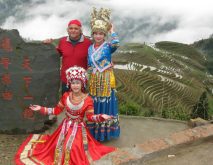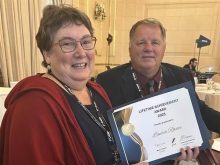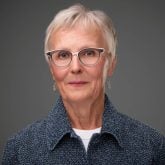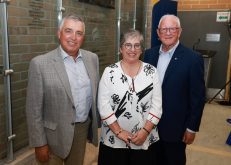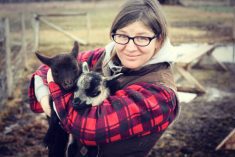A new professor at the University of Manitoba aims to turn data into dollars for Manitoba livestock producers.
Gabriel Dallago has joined the Department of Animal Science as an assistant professor in digital livestock production.
Dallago describes his research as being somewhere between animal and computer sciences. “What I do fits within that whole idea of collecting data on the farm, analyzing that data, and bringing the results back to the farmer in a way that they can use that information to better make decisions,” he said. To date, most of his research has focused on dairy cows.
Read Also

Your best (and easiest) holiday dainty tray
Make-ahead recipes, store-bought goodies and co-operation with friends and family: Here’s how to throw together a stunning, low-stress tray.
Why it matters: Careful combing of production data can help farmers make more informed livestock management decisions.
Dallago has a PhD in animal science from Montreal’s McGill University. He also holds bachelor’s and master’s degrees from the Federal University of Jequitinhonha and Mucuri Valleys in Diamantina, Minas Gerais, Brazil, where he grew up.
When he saw the job posting, Dallago thought the position sounded like the perfect fit.
“It’s really aligned with what I’m interested in doing and my academic training,” he said. “I believe it’s where the industry is heading. There’s been a lot of development on that front.”
To better explain the type of work he does, Dallago described a recent project in collaboration with the dairy herd improvement organization, Lactanet.
In a nutshell, they were looking at management practices around the transition period in cows, from pregnancy to milk production.
“There are a lot of hormonal and physiological changes that happen (during transition). We need to make sure the management practices that we are adopting are as good as they can be, so the animal has a good transition,” he said.

After running multiple tests with multiple management practices and tracking the data, a picture began to emerge about which practices promote and which practices restrict milk production. When enough data is gathered, predictions can be made.
“We can use those predictions and the management practices associated with each prediction to provide guidelines tailored to each animal individually,” he said.
Essentially, the idea is to help farmers make more targeted and informed management decisions.
“If you make those decisions efficiently, you’re optimizing your system and not wasting resources.”
Dallago said he’s looking forward to working with local farmers.
“That’s something that I’ve done in the past too, especially when I was doing my undergrad and my master’s training back in my home country.”
He comes from a family of farmers, so there’s a familiarity there as well.
“I think it’s very important to make the connection with the people that we’re doing research for. We hope that our research will help them. I think it’s very important to make that link and keep a conversation open.”
He started the position at the beginning of March, so outreach work will wait awhile.
“I’m just getting my research going now, but that’s definitely something I’m very much looking forward to doing,” he said.
Dallago will also be teaching a graduate-level statistics course at the university, another aspect of the job he’s looking forward to. He rejects the notion that learning is a one-way street where professors teach and students absorb.
“It’s actually kind of a two-way avenue,” he said. “As you’re teaching students, you also learn a lot from the students.”
Dallago arrived in Winnipeg three days ahead of his start date, on Feb. 23. While he’d experienced Canadian winters while studying in Montreal, it was still a shock to experience the tail end of a Winnipeg winter.
“I came for the interview in July last year, so it was pretty much middle summer, and then I came back on Feb. 27. It was a big change in landscape.”
However, the terrain is somewhat familiar.
“It reminds me a lot of where I grew up back in Brazil,” he said. “It was also very flat in the city where I’m from. It’s a very agricultural area with lots of farms.”




